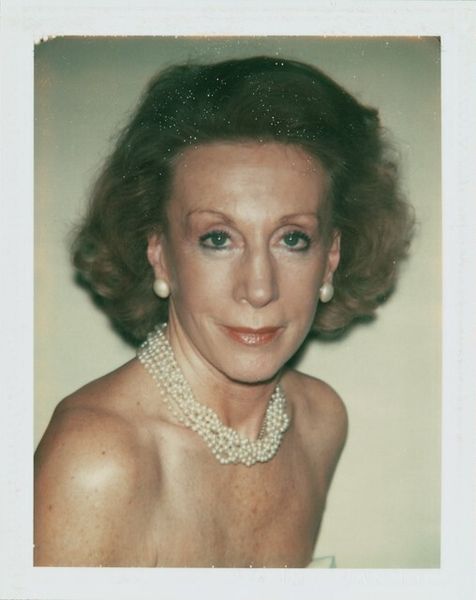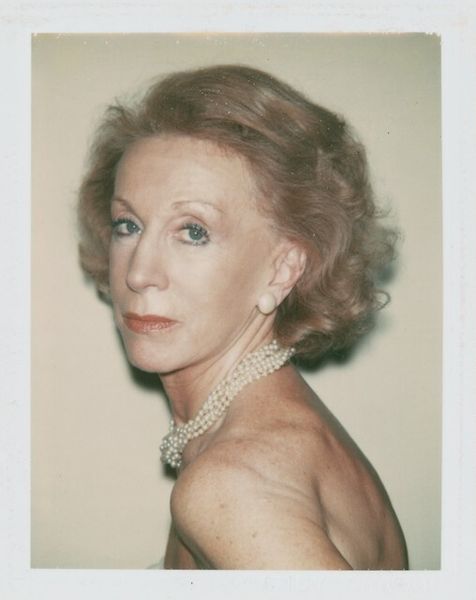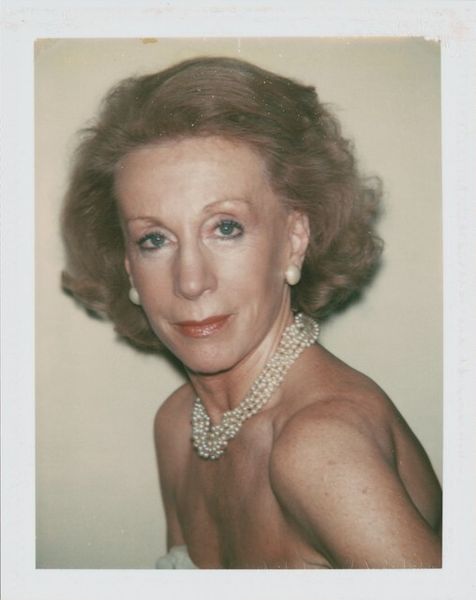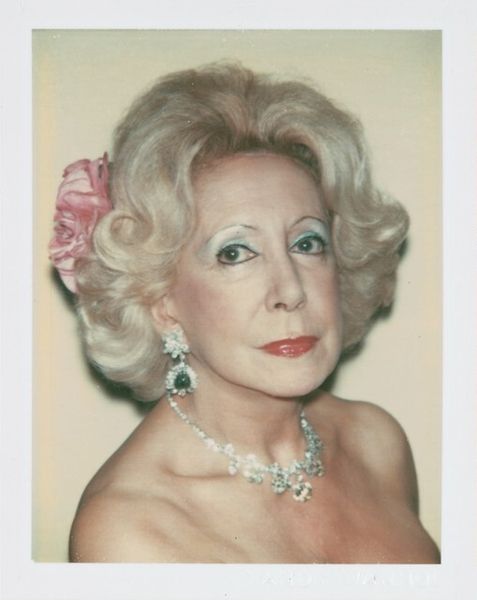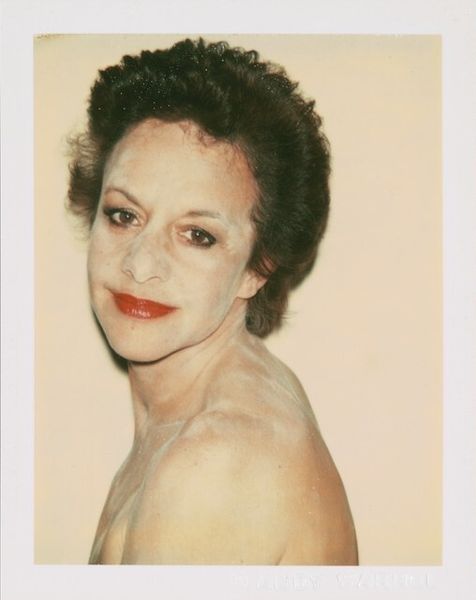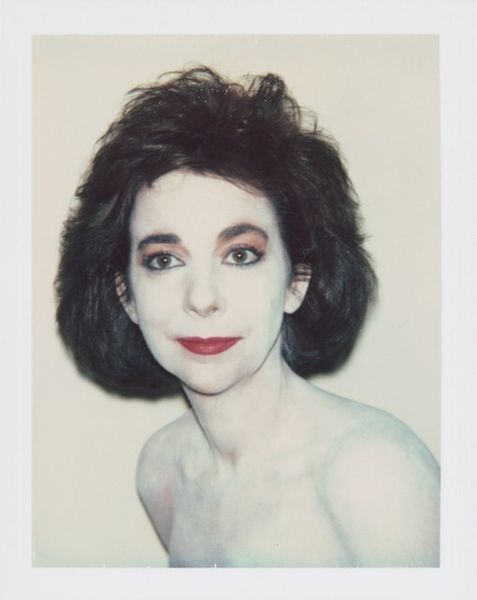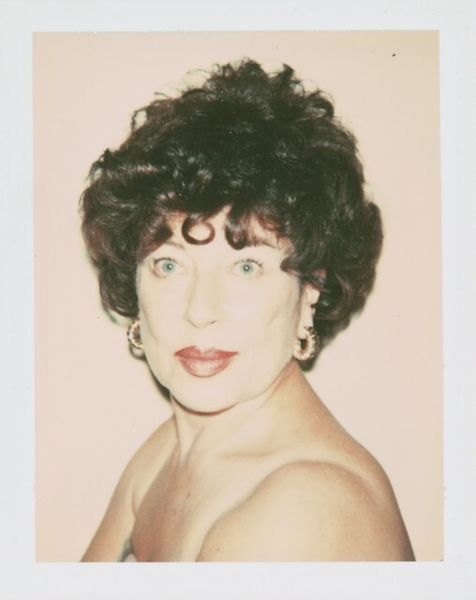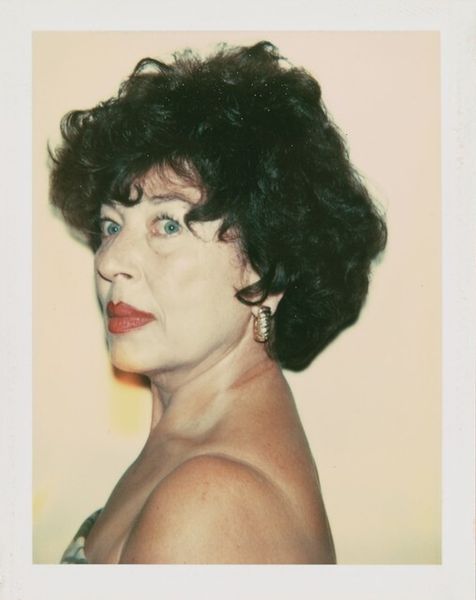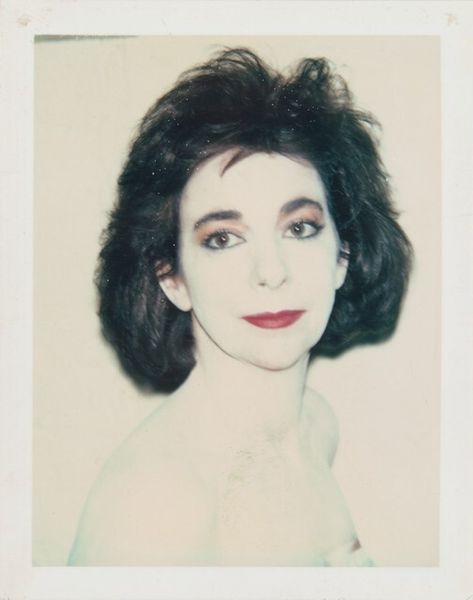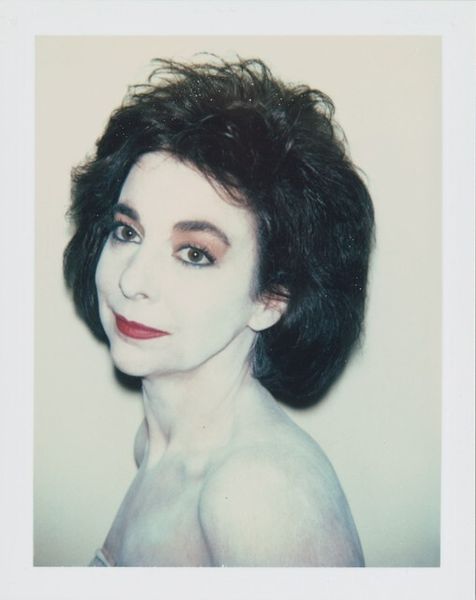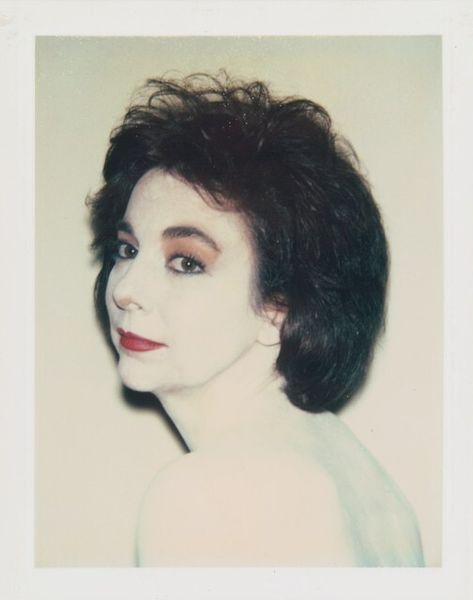
Dimensions: image: 9.5 × 7.3 cm (3 3/4 × 2 7/8 in.) sheet: 10.8 × 8.6 cm (4 1/4 × 3 3/8 in.)
Copyright: National Gallery of Art: CC0 1.0
Curator: Welcome. Before us is Andy Warhol’s “Ina Ginsburg” from 1983, a C-print with acrylic paint. Editor: My first impression is that this is a study in contrasts – a pale figure punctuated by a vibrant red lip, with soft features made slightly haunting by that stark palette. Curator: Indeed. The process itself, using both photography and paint, highlights Warhol's fascination with mechanical reproduction and its intersection with artistic intervention. The C-print, combined with acrylic, allows for this blend of mass-produced image and individualized mark. What stands out for you in terms of its symbolic value? Editor: The ghostly pallor strikes me. It feels almost theatrical, drawing from classical ideas of stage makeup, emphasizing artifice and transformation. The red lipstick then becomes a deliberate focal point, a symbol of vitality against this washed-out background. I think about death and artifice here, and Warhol's well-known engagement with celebrity and its illusions. Curator: Right. This ties directly into the socio-economic implications. The printing technology, the use of vibrant, artificial color: it speaks volumes about consumerism and how identities are constructed, packaged, and commodified, mirroring how consumer products were being manufactured in that same period. Editor: I find that read interesting. For me, the power here lies not just in the commercial aspect, but also in how it touches on universal themes: beauty, mortality, the gaze. The high contrast and the flattening of the face are quite powerful. In stark contrast is the glamour represented through the bold lip and perfect hair. These have historically, been powerful signifiers for women in society. Curator: Well, the materiality is unavoidable when considering Warhol. The mass-producible image reflects not just consumerism, but his interest in democratizing art—making it accessible, repeatable. This idea connects to his artistic labor, making us consider, "what is truly 'original' anymore?" The paint intervenes against that reproducibility. Editor: Both perspectives enrich the work for me. Thinking about Warhol, this piece functions as a meditation on identity in the age of mechanical reproduction, with a rich exploration of archetypes of beauty and mortality in visual terms. Curator: Agreed. Its unique placement within debates of process and persona ensure it remains both a fascinating object, and a significant example of Warhol's extended cultural reach.
Comments
No comments
Be the first to comment and join the conversation on the ultimate creative platform.

